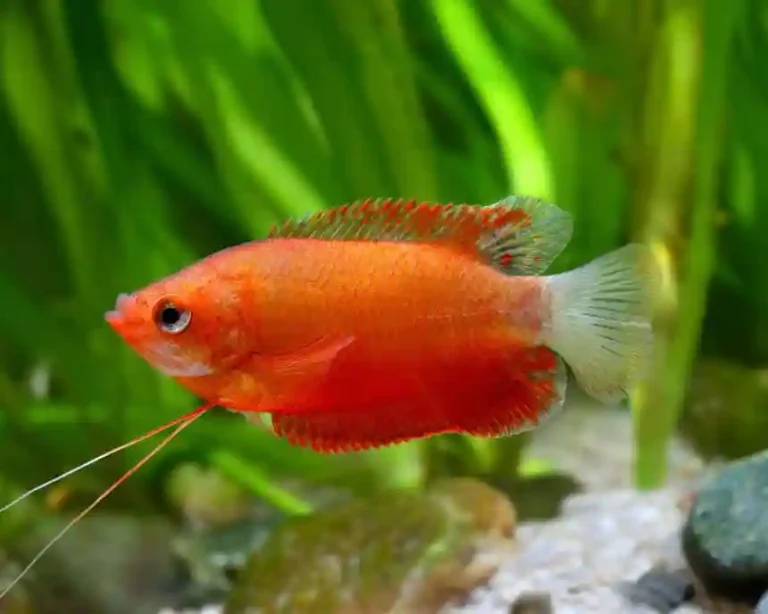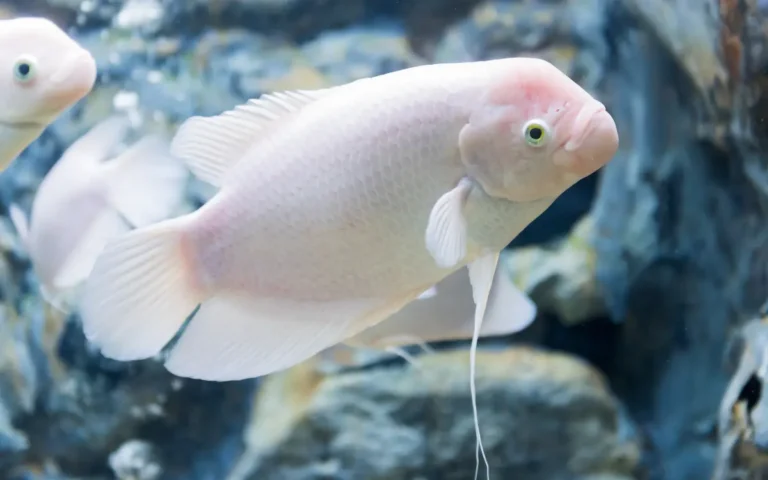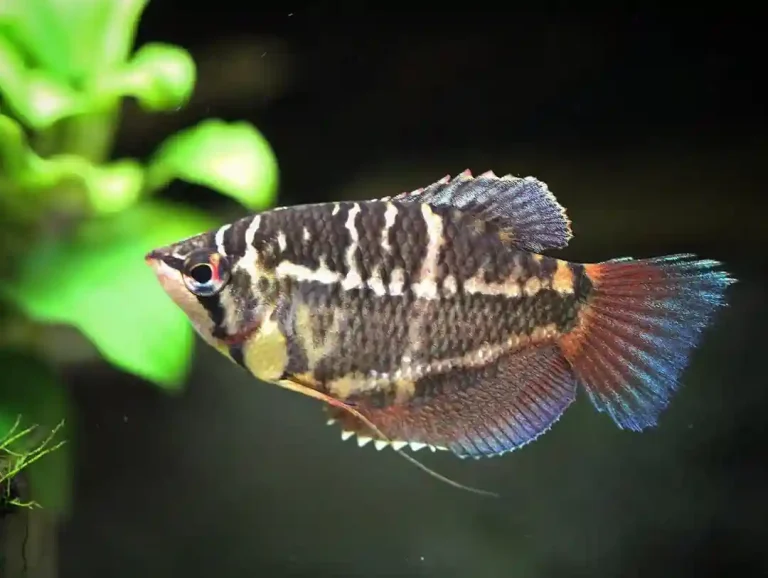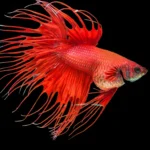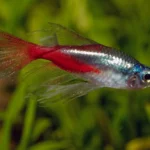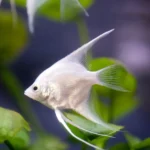Blood Parrot Cichlids are one of those aquarium fish that you either love at first sight or feel unsure about. Their bright orange color, round body, and quirky swimming style definitely make them stand out but they also come with a unique backstory and some special care needs.
Whether you’re a beginner aquarist or just curious about this hybrid fish, this guide will walk you through everything from tank setup and diet to common health issues and tank mates.
Let’s make sure your Blood Parrots live long, healthy, and stress-free lives.
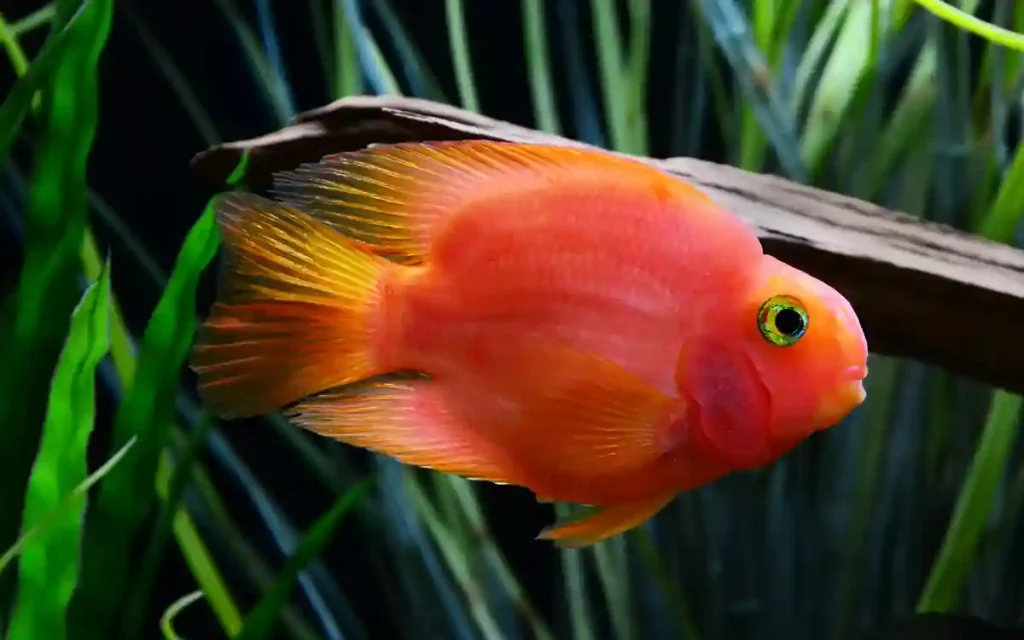
What Is a Blood Parrot Cichlid?
A Hybrid with a Curious Past
Blood Parrot Cichlids aren’t found in the wild—they were first created in the 1980s by selectively breeding Midas Cichlids with Redhead Cichlids. This cross resulted in a bright orange fish with a round, balloon-like body and a distinctive beak-shaped mouth. Because of this unnatural shape, they’re often at the center of debate in the aquarium world. Still, many aquarists love them for their playful behavior and bold colors.
What They Look Like
- Size: Usually 6–8 inches fully grown
- Color: Bright orange is most common, but red, yellow, and even albino varieties exist
- Shape: Rounded body, tiny mouth, and often a slight curve in posture
- Lifespan: 10 to 15 years with proper care
Personality
Blood Parrots are generally peaceful, though they can show territorial behavior during feeding or spawning. They may hide when first introduced but usually become active and social once they get comfortable.
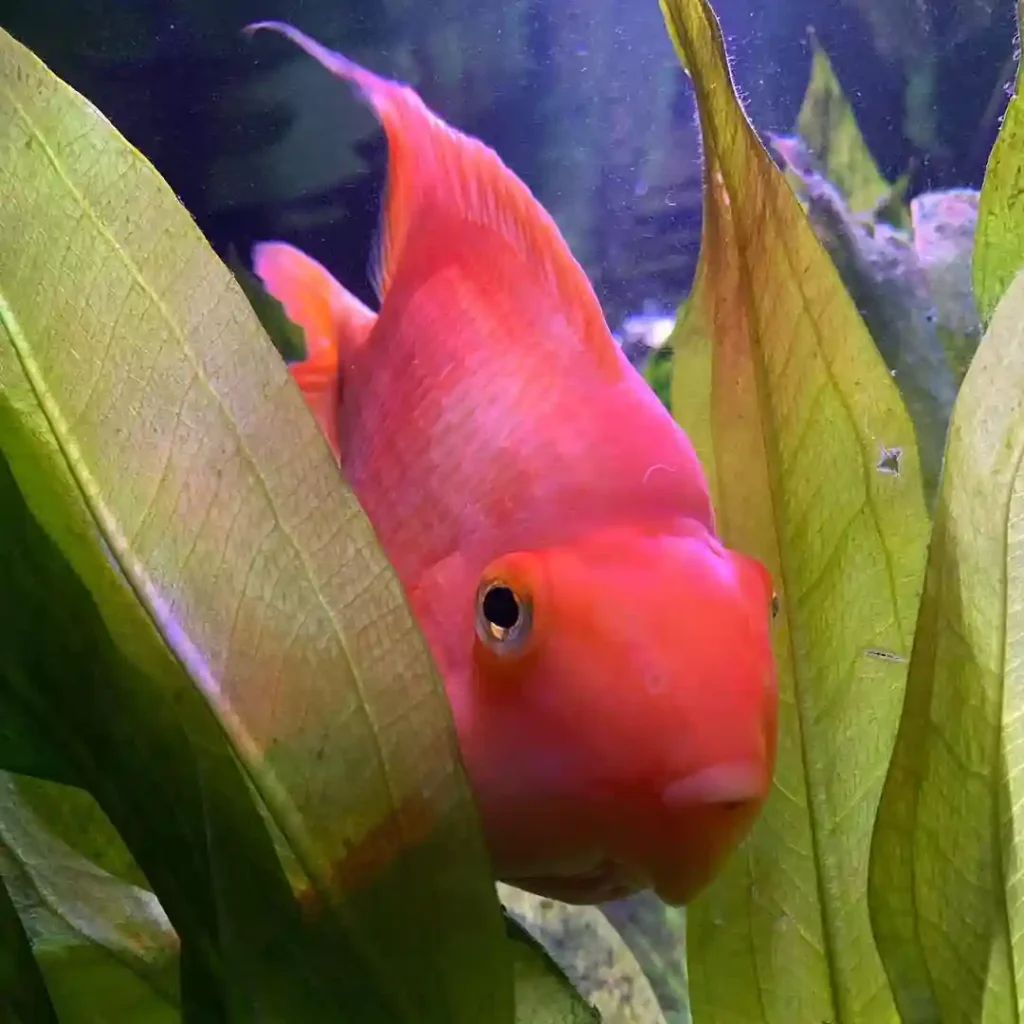
Ideal Tank Setup for Blood Parrots
Tank Size
Start with a minimum of 30 gallons for one fish. If you plan to keep a pair or add compatible tank mates, go for 55 gallons or larger.
Substrate and Decor
Choose a soft gravel or sand substrate to protect their delicate bodies. Include smooth rocks, caves, clay pots, and driftwood. Blood Parrots love having hiding spots and will feel more secure in a decorated environment.
Avoid sharp edges—since they don’t swim very gracefully, anything too pointy could lead to injuries.
Filtration and Water Flow
They are messy eaters, so a strong filter (canister or HOB with bio-media) is a must. Just keep the water flow gentle—Blood Parrots aren’t strong swimmers.
Lighting
Stick to moderate lighting. Overly bright lights may stress them, while a dim tank helps them feel more secure.
Water Parameters
| Parameter | Ideal Range |
| Temperature | 76–80°F (24–27°C) |
| pH | 6.5–7.5 |
| Hardness | 6–18 dGH |
| Ammonia/Nitrite | 0 ppm |
| Nitrate | Under 20 ppm |
Do 25–30% water changes weekly, and monitor water quality using a reliable test kit. Stable, clean water is key to avoiding health issues.
What Do Blood Parrots Eat?
Diet Basics
Blood Parrots are omnivores and do well on a high-quality pellet as their staple food. Look for sinking pellets designed for cichlids. Supplement with:
- Frozen or live foods: bloodworms, brine shrimp, daphnia
- Blanched veggies: spinach, peas (shelled), zucchini
- Occasional treats: freeze-dried krill or garlic-soaked food
Feeding Tips
- Feed 2–3 small meals a day
- Soak dry food before feeding (helps prevent air intake and bloating)
- Remove uneaten food to prevent water fouling
Compatible Tank Mates
Blood Parrots generally get along with other peaceful or semi-aggressive fish of similar size.
Good Tank Mates
- Silver Dollars
- Severums
- Angelfish
- Rainbowfish
- Clown Loaches
Avoid These
- Small fish like neon tetras (could be accidentally eaten)
- Fin-nippers (e.g., tiger barbs)
- Very aggressive cichlids like Jack Dempseys
Common Blood Parrot Health Issues
Genetic Challenges
Because of their hybrid nature, Blood Parrots are prone to:
- Mouth deformities (difficulty closing mouth or feeding)
- Swim bladder issues (poor swimming or floating awkwardly)
Disease Risks
Watch out for common freshwater diseases like:
- Ich: white spots on body and fins
- Hole in the Head (HITH): common in cichlids due to poor water quality
- Constipation: from overfeeding or poor diet
Prevention
- Feed varied, high-quality food
- Keep water clean and stable
- Quarantine new fish and plants before adding
Breeding Blood Parrots – Can It Be Done?
Reproduction Facts
Most male Blood Parrots are sterile, though mating behavior still occurs. Females can sometimes lay eggs, especially if paired with another cichlid species like a Convict Cichlid—but raising fry is rare.
Breeding Setup
- Use a separate breeding tank (30–40 gallons)
- Flat rocks or pots for egg-laying
- Remove adults after spawning (they may eat the eggs)
Behavior and Personality
Blood Parrots are known to:
- Follow your finger along the glass
- Interact with owners
- “Pout” or act shy when stressed
- Sometimes rearrange substrate or decor
They’re not fast swimmers, so don’t expect quick darting motions. They’re more about slow, wobbly charm.
Read also: Parrot Cichlid Care: Tank Size, Feeding, Behavior
Are Blood Parrots Right for You?
Pros
- Long-lived and hardy
- Great personality
- Vibrant colors brighten any tank
Cons
- Can’t be bred easily
- Require specific care due to deformities
- Not suitable for small tanks or aggressive communities
If you’re willing to meet their needs, Blood Parrots can be an amazing centerpiece in your aquarium.
FAQs
Why does my Blood Parrot hide all the time?
They may be adjusting to a new environment or stressed by light or tank mates. Add caves or floating plants to help them feel secure.
Can Blood Parrots live with angelfish?
Yes, if both species are calm and the tank is spacious enough. Avoid crowding or competing for food.
Why is my Blood Parrot turning pale?
Pale color can be caused by stress, poor diet, or bad water quality. Test the water and try adding high-protein foods to boost color.
Do they need live plants?
Not necessarily, but hardy plants like Anubias or Java Fern can be used. Make sure they’re anchored, as Blood Parrots may dig.
Are Blood Parrots aggressive?
They can show territorial behavior, especially during feeding or if cramped. But overall, they’re one of the more peaceful cichlids.

